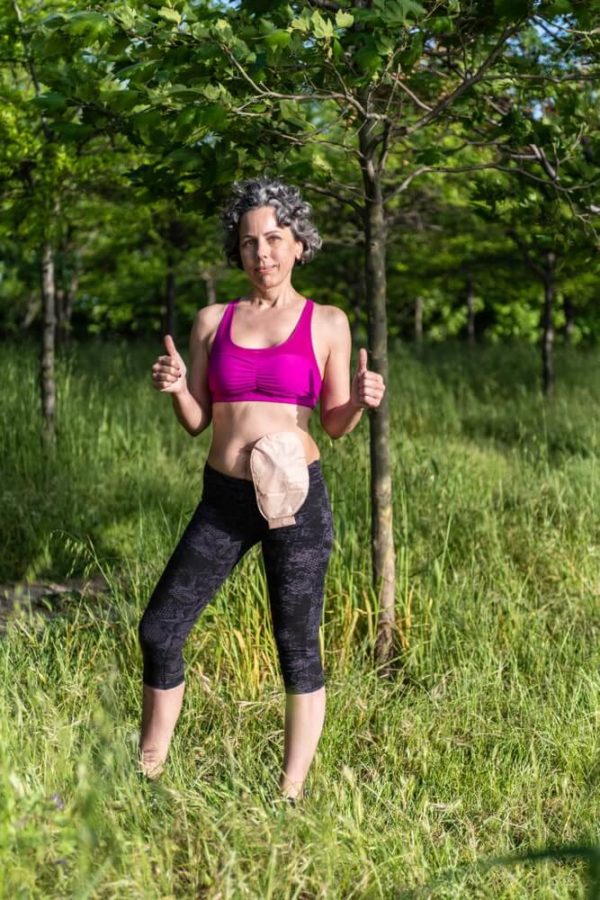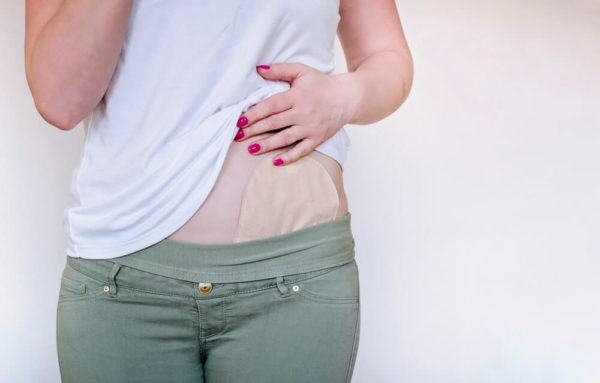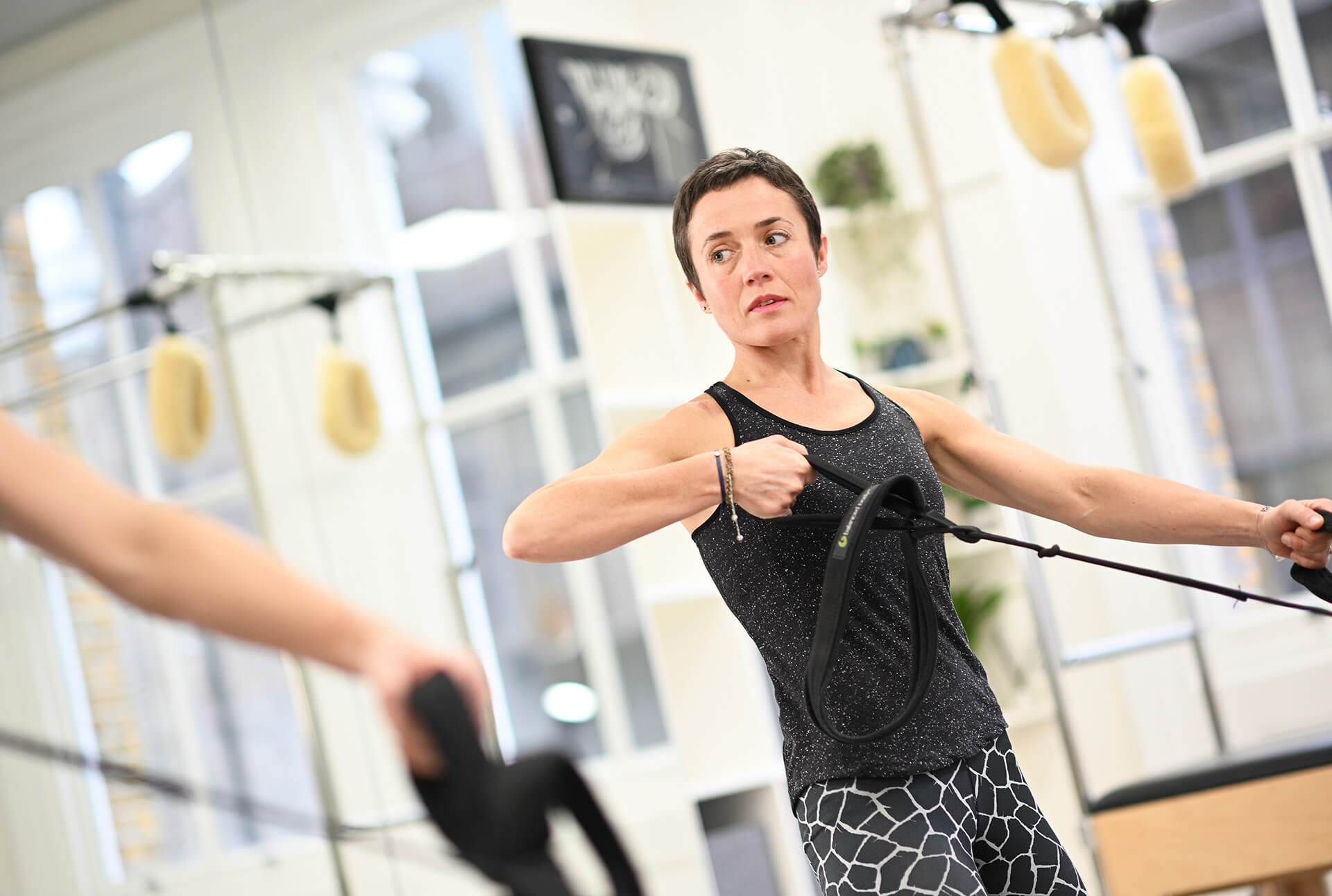If you have had stoma surgery it can be a very challenging time getting used to a new way of living. But a stoma does not have to stop you from living your life fully and exercising regularly.
As you are recovering from surgery, exercise might be the last thing on your mind but your stoma nurse and GP will be there to recommend on getting physically active again. Getting fit and being active is key in recovering quickly and an overall better quality of life.
If you have a stoma from bowel cancer surgery, regular exercise will improve your chances of living a long and healthy life. There is increasing evidence in the research that links physical activity and increased survival.
In this article Ruth Smith, physiotherapist and Pilates instructor at Complete Pilates will talk about;
- What a stoma is
- The guidance on exercising with a stoma
- Benefits of exercise if you have a stoma
- Precautions for exercise with a stoma
- Top tips on exercise with a stoma
What is a stoma?
A stoma is an opening on the front of your tummy which is created surgically and linked to the bowel. A stoma can be needed for a variety of medical problems but we are focusing on people who have had bowel cancer. At Complete Pilates one of our specialties is cancer rehabilitation and we see patients to support them through their recovery and return to full fitness with physiotherapy and Pilates.
A stoma can be temporary or permanent depending on the type of cancer and surgery you have had. There are different types depending on whether it is connected to the small bowel (ileostomy) or large bowel (colostomy) and that will depend on the location of the bowel cancer.
A stoma is pain free as there is no nerve supply. The surgeon would create the hole in the wall of your tummy and then connect the bowel so that the waste can then be collected in an external pouch. This is commonly known as a stoma bag or colostomy/ileostomy bag.

Guidelines on exercise with a stoma
Exercise is an important part of both treating cancer and recovering from surgery. If you have bowel cancer you can reduce the risk of the cancer recurring by as much as 50% if you are regularly physically active.
Having a stoma should not be a barrier to exercise and keeping active. There are specific guidelines on how much exercise you should be doing and how you should be doing which apply to both people with a stoma and those without.
Ideally exercise should be individually prescribed so that all your needs and goals can be considered. This can be done with a cancer rehab physiotherapist and you can search for a local physiotherapist to you on the Pinc and Steel website. The physiotherapist will help you to gradually progress your exercise in frequency, duration and intensity depending on your usual level of fitness and activity and your medical history.
Ideally you should reach a level where you are doing the following;
- A total of 150 minute of exercise per week at moderate intensity
- Around 30 minutes per day of cardio exercise
- 2-3 sessions of strength training per week where you work all the large muscles groups
- Flexibility and balance training on most days of the week
Stoma specific advice for exercise
If you are new to having a stoma or new to exercising with a stoma you may feel nervous that you could do some damage or that it may leak. This is a normal concern but with the right precautions it is very rare and exercise is safe and advised.
It is tempting when we exercise to drink a lot but little and often is best. Particularly if you have an ileostomy you want to be cautious to not drink too much water or it could cause a lot of water in your bag. Try and drink fluids specifically made to rehydrate you.
Make sure you empty your bag before exercise so that you are less concerned about leaking and more comfortable.
You might find wearing a specific ouch belt or support garment is helpful to keep the bag in place even if the adhesive starts to come away.
You can wear a cotton pouch cover so that the bag is not rubbing on your skin during more vigorous movement.
It is always a good idea to take some spare bags and spare clothing if you are exercising at a gym or facility away from home.

Precautions for exercise with a stoma
The association of stoma care nurses in the U.K. have published Stoma Care Clinical Guidelines which promote the importance of exercise with a stoma but highlight some precautions.
The precautions are in place to prevent hernia development around the site of the stoma. A hernia is when there is a weakness in the abdominal wall (in this case from the stoma surgery) and the muscles can come away from the stoma edges. This means that the stoma is not necessarily held in place neatly and there can be a bulge next to the stoma which can cause problems with bowel function and your general function.
Hernia can occur from any increase in tension on the muscles across the wall of your tummy. This could be due to being overweight, coughing, developing infection in the stoma site or due to heavy loading of the abdominal muscles.
It is recommended to avoid lifting or sit ups for the first 6 weeks after surgery. You should only lift up to the weight of a kettle and do abdominal and pelvic floor training recommended by your cancer rehab physiotherapist. Those exercises will start 2-3 days after having surgery so the guidelines do not mean you will be inactive!
Walking after the surgery will be limited to begin with whist everything heals. It is sensible to try and walk every day after surgery but this will build up gradually from a few minutes in the first week to around 30 minutes after 6 weeks. Remember everyone is different and this will depend on other treatment you are having and any other conditions you may have.
Lying on your front to exercise can be concerning due to the direct pressure on the stoma site. There is no reason why you can’t lie on your front and it is not going to cause any harm. It is recommended that you empty the bag first and use your support belt to keep it in place.
Benefits of exercising with a stoma
There are many reasons why you should be exercising regularly which are well proven in the research;
1. Maintain a healthy weight
Exercise can help patients to maintain a healthy weight. Being overweight can cause more problems with hernia around the stoma due to the increased strain on the abdominal muscles.
2. Heart and lungs fitness
Exercise improves the health of your heart and lungs and whole cardio-respiratory system reducing the risk of other health conditions and allowing you to be fully active.
3. Boost your immune system
There is some evidence to show that moderate exercise as advised above can help to support your immune system and therefore keep you well.
4. Increase muscle strength
Your muscles are incredibly adaptive, if you work them effectively 2- 3 times a week you will see an increase in strength. Not only does this help you to achieve your goals with your whole body activity but it helps to keep your stoma supported and reduce the risk of hernia. When we train the abdominal muscles effectively without overloading the stoma site will be less likely to develop a hernia.
5. Live a full life!
Exercising regularly reduced the risk of recurrence of bowel cancer and allows you to live a full life pain-free and without restriction.

Top tips for exercising with a stoma
These are some top tips from people who have had a stoma and are physically active. These are from patients who have seen Pinc and Steel physiotherapist for rehabilitation after bowel cancer.
- The waistband of your shorts or leggings will need to be higher or lower to avoid restricting the stoma bag. This is because it will ‘pancake’ if there is too much pressure on the bag. Pancaking is when a vacuum occurs and the stoma bag sticks together, preventing the contents from dropping to the bottom.
- Activity triggers stoma activity and can cause discharge from your rectum so wearing a pad in your underwear may help to catch any leaking.
- Empty the bag before any activity
- Regular interruptions may be needed to empty the bag. This is normal, after a visit to the toilet just resume your activity. Remember that activity does not have to be continuous to be beneficial and these regular breaks to go to the toilet can help you to enjoy the activity and feel less stressed.
- Before you plan an activity, you may want to take note of where the toilets are.
- Sometimes an activity that causes you to sweat might cause the bag to unstick from the skin. If this happens you may have a leak. Flange extenders may be useful to keep the bag in place.
- I always wear dark coloured clothing when I am exercising so that if a little bit of liquid escapes the bag the stain doesn’t immediately show. I also carry wet wipes and a spare bag just in case.
- The more you move around and stretch your tummy make make loud noises or squeak (mine does!) so know that is normal. If you still have a rectum you may release mucus, that’s normal too.
Summary
All the evidence shows that exercise with a stoma is good for you in many different ways. The stoma should not be a barrier to exercising and if you feel it is limiting you speak to your stoma nurse or physiotherapist. We are here to help! Complete Pilates provides one to one physio-led Pilates in our equipment studios or online and we have an on-demand platform with courses and monthly subscription classes.
References
Buffart et al Evidence based physical activity guidelines for cancer survivors: current guidelines, knowledge gaps and future research directions.
Je et al Association between physical activity and mortality among breast cancer and colorectal cancer survivors: a systematic review and meta analysis of cohort studies.
Education is key:
These blogs are designed to give information to everyone, however, it is important to remember that everyone is different! If you have not seen one of our therapists and have any questions about injuries, what you have read or whether this may be useful to you, please just ask. We are more than happy to help anyone and point you in the right direction. Our biggest belief is that education is key. The more you understand about your injury, illness and movement, the more you are likely to improve.




